京城风尚 | 北京评书:在醒木上“雕琢”劳动人民说话的艺术
评书是由我国劳动人民创造的一种口头文学
历史十分悠久
早在春秋时代就有相关的记载
Pingshu, or storytelling is a kind of oral literature
created by working people in ancient China
It enjoys a long history and the earliest historical records of this art form trace back to the Spring and Autumn Period (770-476 BC)
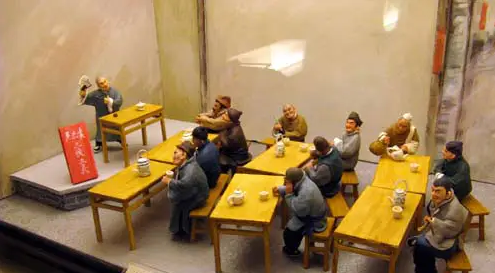
图片来源:@北京旅游网,如有侵权立即删除
其中北京评书,是一种以普通话为基础的传统说唱艺术,主要盛行于北京、天津、河北及东三省地区。因其表演形式和内容简单且通俗易懂,备受民众喜爱。
Beijing Pingshu is a traditional art form of storytelling based on Mandarin that mainly prevails in Beijing, Tianjin, Hebei, and northeastern China. It is favored by common people for its simple and easy-to-understand performing methods and contents.
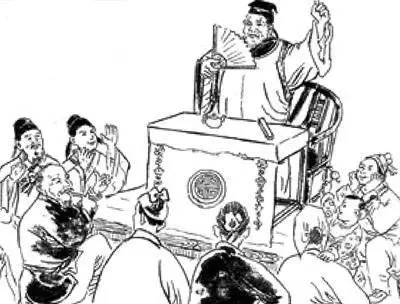
图片来源于网络,如有侵权立即删除
历史发展及代表人物
Historical Evolution and Representative Figures
北京评书的历史发展大致可以分为四个时期
The history of Beijing Pingshu can be roughly divided into four periods
清初 开创时期
Period of Origin, Early Qing Dynasty
代表人物:王鸿兴——北京评书开山之祖
Representative Figure: Wang Hongxing, Father of Beijing Pingshu
清末民初 奠基时期
Period of Foundation, Late Qing Dynasty and Early Republic of China Period
代表人物:双厚坪、潘诚立
Representative Figure: Shuang Houping, Pan Chengli
二十世纪30-40年代 兴盛时期
Period of Zenith, 1930s and 1940s
代表人物:王杰魁、连阔如、陈士和
Representative Figure: Wang Jiekui, Lian Kuoru, Chen Shihe
解放后 拓新时期
Period of Innovation, After 1949
代表人物:袁阔成、李鑫荃、连丽如、单田芳
Representative Figure: Yuan Kuocheng, Li Xinquan, Lian Liru, Shan Tianfang
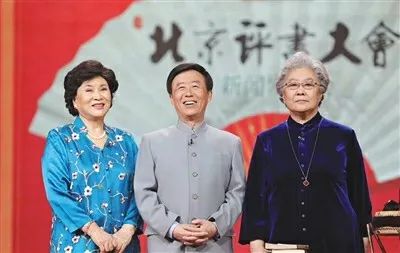
《北京评书大会》从左至右,刘兰芳、田连元、连丽如
图片来源:新京报,如有侵权立即删除
Beijing Pingshu Conference. From left to right: Liu Lanfang, Tian Lianyuan, Lian Liru
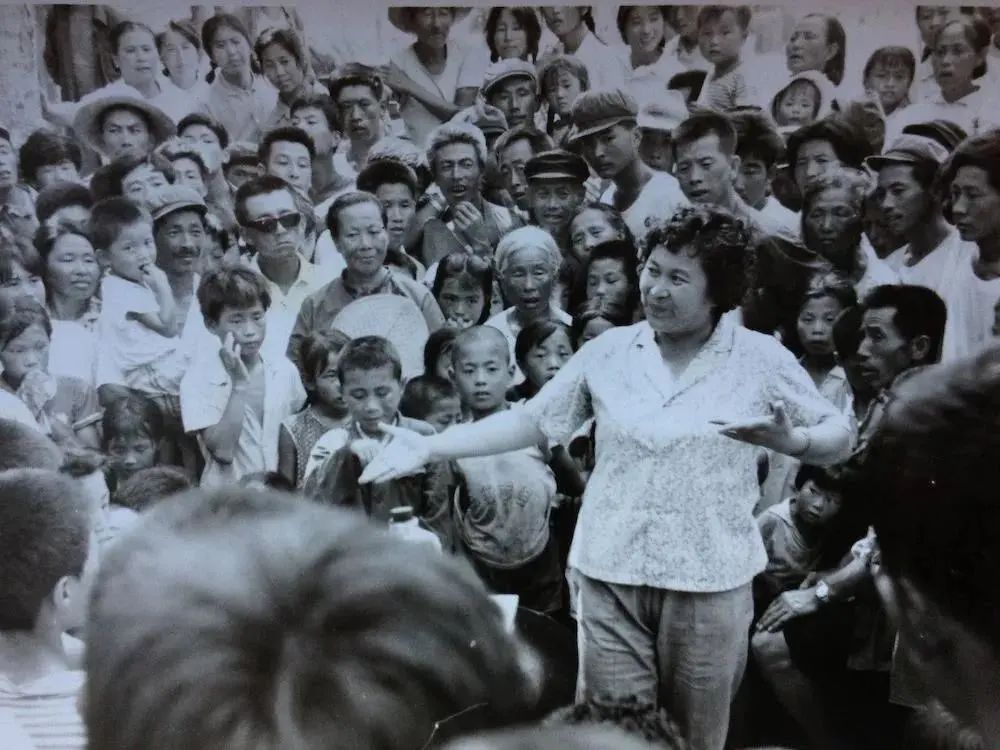
刘兰芳先生早期演出照片
图片来源:中国非物质文化遗产网,如有侵权立即删除
A historical photo showing Liu Lanfang in performance
表演形式
Performing Methods
北京评书通常是一个人表演在演出时,坐在桌子后面,在台上摆上一张桌子、一把椅子。桌上放三件道具:醒木、折扇、手帕。
讲究些的,就再加上桌围、椅披,更甚的挂上“守旧”、门帘、字画、对联、抱柱等,因为过去一场演出的时间比较长,所以还会备有水杯和烟缸等。但是一般来说,演员仅用“三大件”即可。
在传统的北京评书表演中,通常会先念一段“定场诗”,或者先讲一段小故事,然后再进入正式表演。我们熟知的“说书唱戏劝人方,三条大路走中央。善恶到头终有报,人间正道是沧桑。”便是评书《七杰小五义》的定场诗。
The performer of Beijing Pingshu often sits in a chair behind a desk on the stage. On the desk are three props: an attention-catching block, a folding fan, and a handkerchief.
In more formal performances, the desk and chair would be encircled by a curtain, and even accompanied with a door curtain, calligraphic and painting works, couplets, and columns. In the past, a performance could last for hours, so a cup and an ashtray would be prepared for the storyteller. In general, a performer only needs the aforesaid three props.
In a traditional performance of Beijing Pingshu, the storyteller usually starts with reciting a theme-setting poem or telling a short story before the formal performance. For instance, the theme-setting poem for Seven Heroes and Five Gallants reads, “Stories are told to advise people to do good, and one should follow the right path of life. Good will be rewarded with good and evil with evil, and the right path in the world is the vicissitudes of life.”

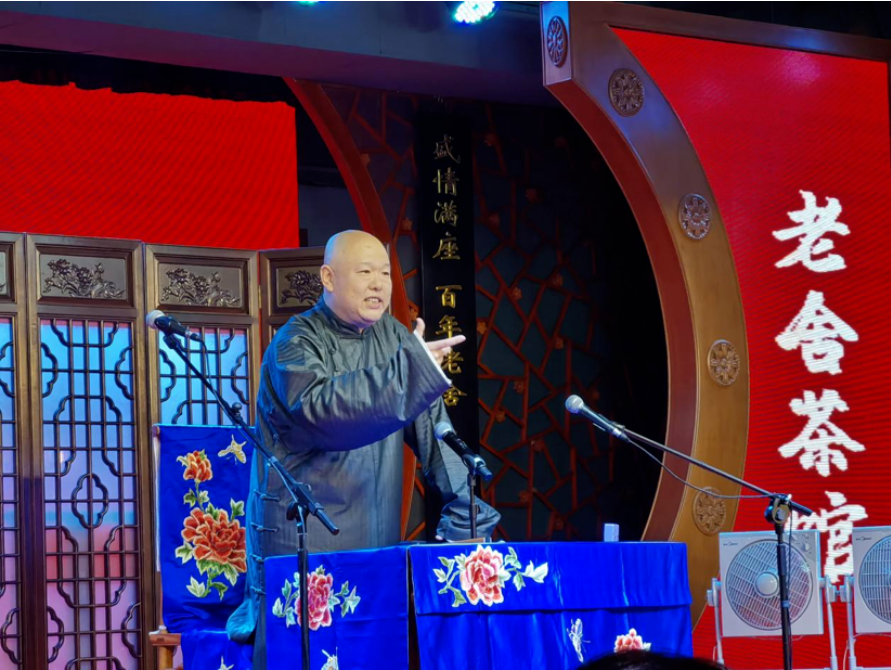
图片来源:光明日报,如有侵权立即删除
演员用手势和表情等手段来讲述故事情节,还经常借助口技来模拟各种声响,如风声、雨声、马蹄声等,渲染氛围,引人入胜,惟妙惟肖。故有“一人、一扇、一醒木、一方帕,便可演绎千军万马、浩瀚苍穹”之说。
The performer employs hand gestures and facial expressions when telling stories, and uses oral stunts to simulate the sounds of wind, rain, running horses, and others to create the atmosphere and attract the audience. As a saying goes, “a single storyteller using a folding fan, an attention-catching block, and a handkerchief can simulate a big army and even the vast universe.”
醒木
Attention-catching block
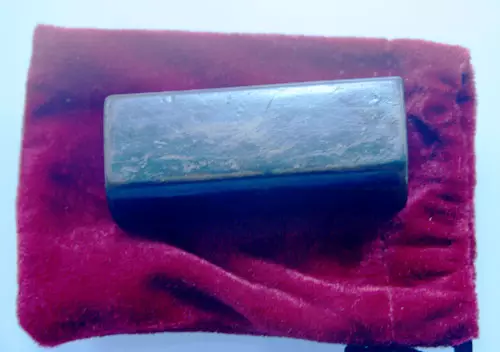
刘宝瑞先生用过的醒木
图片来源:长城曲艺网,如有侵权立即删除
An attention-catching block used by Liu Baorui
醒木,又被观众俗称为“惊堂木”,早期书馆说书会将故事分成十分钟的小段儿,按段儿收费。因此每段儿的开始都摔一下醒木,用来提示观众演出即将开始,在结束的时候也摔一下,来提示该收费了。因此,醒木的主要功能就是警醒观众。
The attention-catching block is popularly called “shocking wood” by the audience. In the past, the storyteller divided a performance into many 10-minute sections, and charged separately. Therefore, he would hit the attention-catching block at the beginning of each section to remind the audience that the performance is about to start, and do the same at the end to remind them of paying. Thus, the main function of the attention-catching block is to remind the audience.
折扇
Folding fan
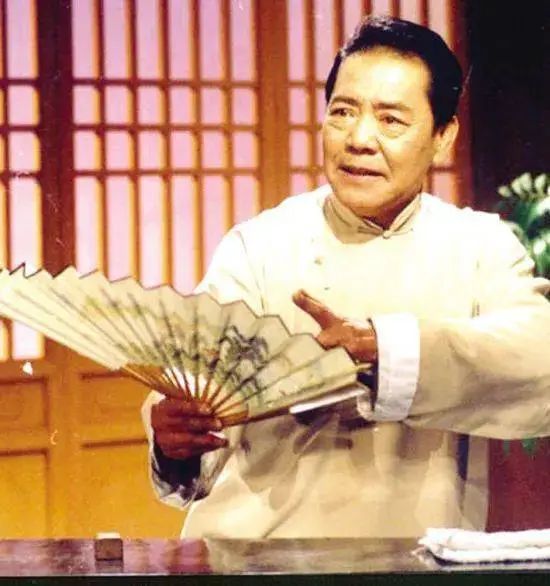
单田芳先生使用折扇画面
图片来源:@对对书场,如有侵权立即删除
Shan Tianfang uses a folding fan in performance
在评书的舞台上,扇子的使用讲究“文胸武肚媒肩仆袖”,意思就是要在使用折扇的时候考虑符合人物的身份。
在跌宕起伏的故事情节中,评书先生手中的折扇可化作百般物件儿,拧着是枪,端着是刀,横着是剑,竖着是笔,打开是书信、地图、圣旨……
In Pingshu performances, the use of the folding fan shall meet the identity of the characters depicted. For instance, “an official usually fans wind to the chest, a general to the stomach, a monk or Taoist to the collar, a storyteller to the mouth, a civil servant to the sleeves, and a matchmaker to the shoulder.”
Besides, storytellers use the folding fan to simulate various things in the process of storytelling. If pinched, it is a spear; If held in hand, it is a knife; if held horizontally, it is a sword; If held vertically, it is a pen; If unfolded, it is a letter, map or imperial decree…
手帕
Handkerchief

说书人桌子上的手帕
图片来源于网络,如有侵权立即删除
A handkerchief on the desk of the performer
表演当中,折叠可代替书信、书、表、摺本用,也可以当手帕用,摸拟擦汗、擦眼泪,使表演更加有画面感。
In Pingshu performances, a handkerchief can be pretended to be a letter, book, script, or written report to the emperor. Of course, it can be also used to simulate the act of wiping the sweat or tears, making the performance more vivid.
重要特征
Important Feature

北京评书《三国演义·白马坡》
Beijing Pingshu Romance of the Three Kingdoms · White Horse Hill
评书精在一个“评”字,古人说“以史为鉴,可知兴替”,评书的重要特征就在于“古事今说,佐以评论”,用口语化的表述论古谈今,警醒世人。
Pingshu focuses on “ping” (meaning “comment”). An old Chinese saying goes, “Taking history as a mirror, we can know the rise and fall.” An important feature of Pingshu is that it comments the past in colloquial expressions to warn people today.
以北京评书为代表的中国评书艺术
是最具中国民族特点
最富中国审美特色的
艺术类型之一
Chinese storytelling represented by Beijing Pingshu
is one of the art forms
with the strongest Chinese folk flavor
and aesthetical features

